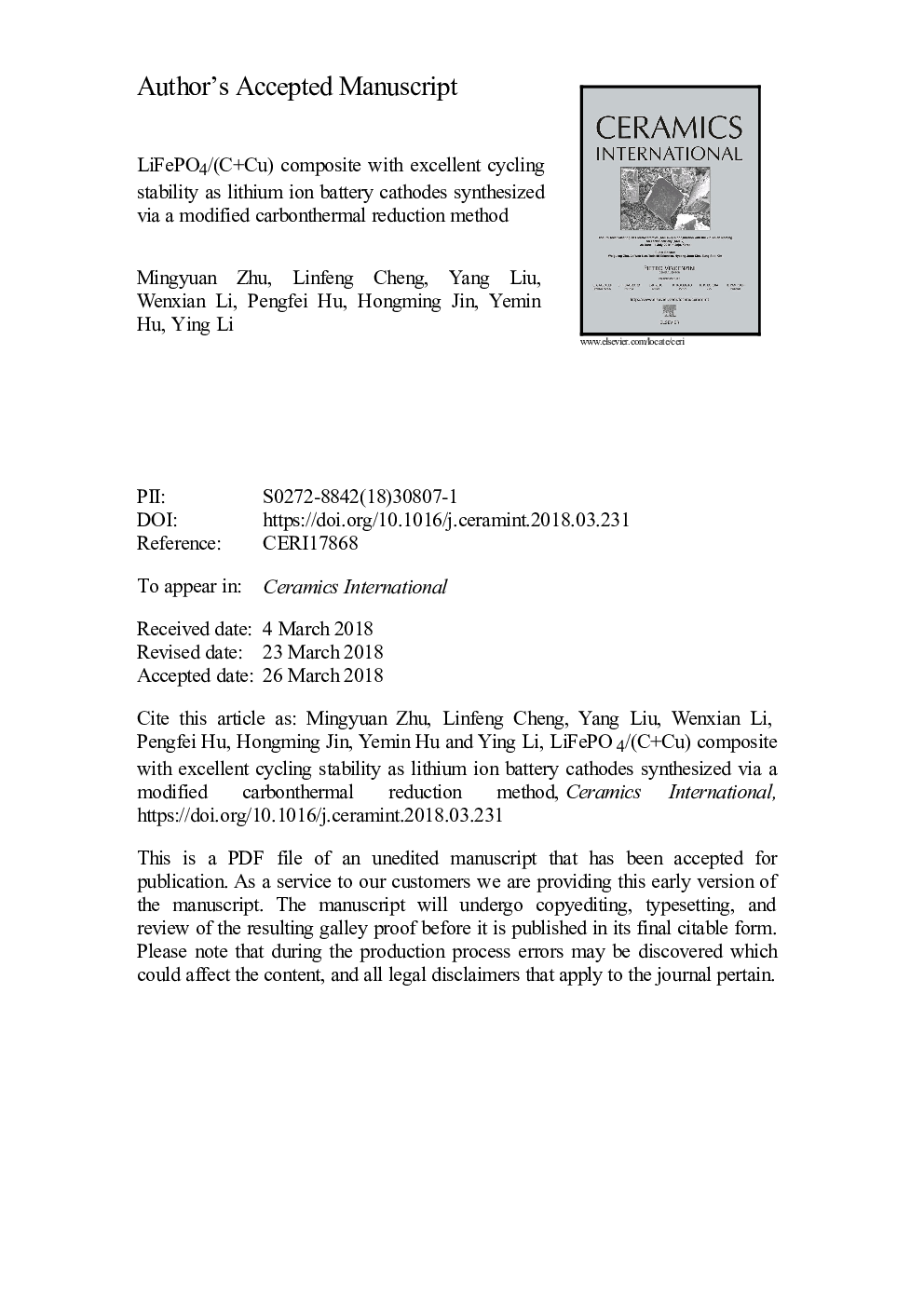| Article ID | Journal | Published Year | Pages | File Type |
|---|---|---|---|---|
| 7886724 | Ceramics International | 2018 | 25 Pages |
Abstract
In order to improve the electronic conductivity of lithium iron phosphate (LiFePO4), copper was added to modify LiFePO4/C composite as cathode material for lithium-ion battery, which was successfully synthesized via a modified carbothermal reduction method using a low cost Fe3+ salt (Fe (NO3)3) as iron source. The morphology, particle size and electrochemical performances of olivine LiFePO4 modified with carbon and copper were systematically investigated by X-ray diffraction (XRD), scanning electron microscopy (SEM), transmission electron microscopy (TEM) and galvanostatics tests. The results show that the prepared composites were irregularity sphere with size of 100-200â¯nm, which were relatively even-distributed copper particles coated with a 3â¯nm carbon layer. The as-prepared composites exhibit an initial discharge capacity of 160.7â¯mAâ¯hâ¯g-1 at current density of 0.1â¯C-rate, the capacity retention ratio is 98.6% at 0.5â¯C-rate after 200 cycles, and 96% at 5â¯C-rate after 500 cycles, respectively. The impedance tests reveal that the addition of copper further reduces the electric resistance of LiFePO4/C. The well-designed synthesis method is hopeful to be applied to prepare other electrode materials of LIBs.
Related Topics
Physical Sciences and Engineering
Materials Science
Ceramics and Composites
Authors
Mingyuan Zhu, Linfeng Cheng, Yang Liu, Wenxian Li, Pengfei Hu, Hongming Jin, Yemin Hu, Ying Li,
